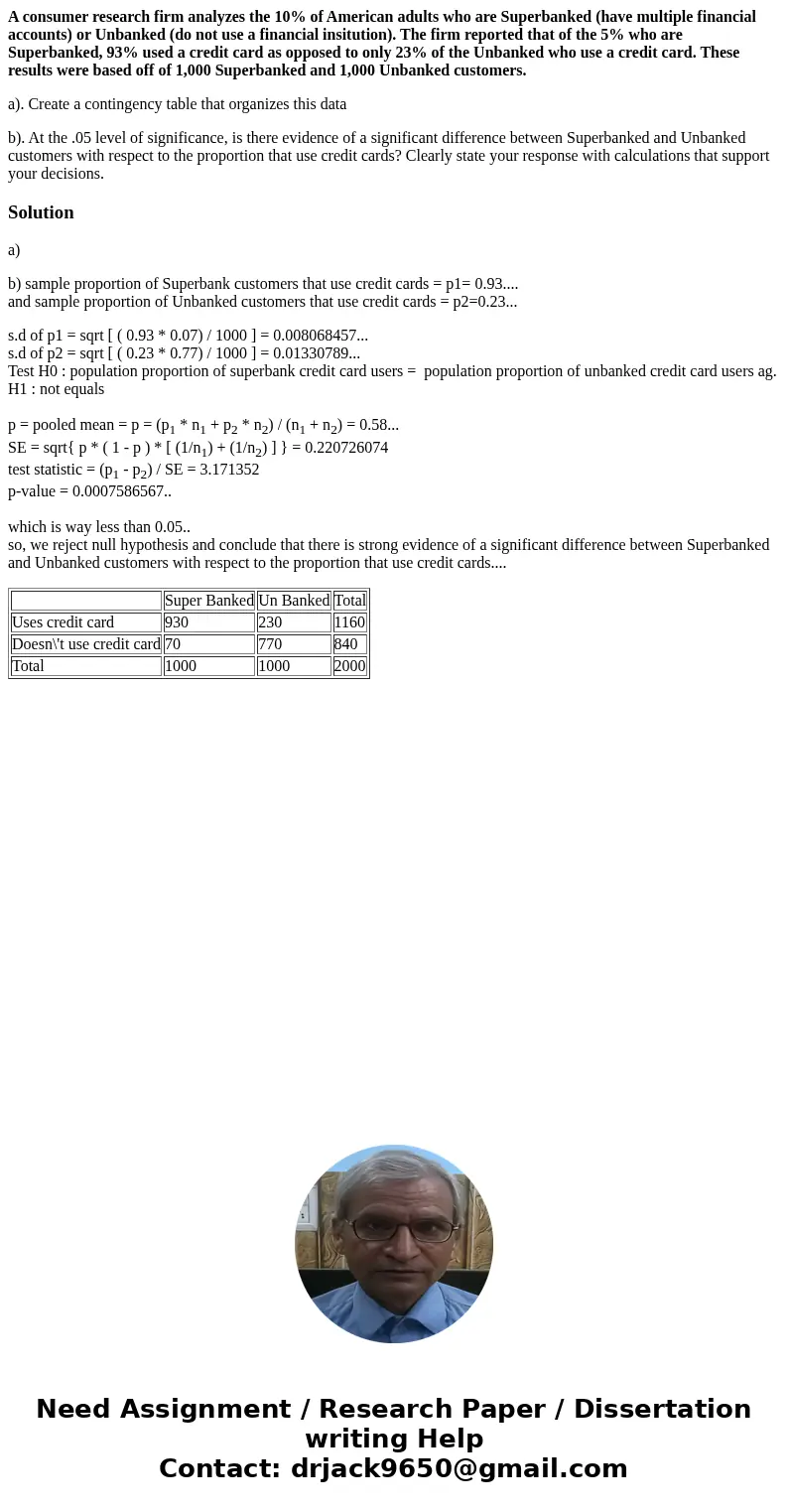A consumer research firm analyzes the 10 of American adults
A consumer research firm analyzes the 10% of American adults who are Superbanked (have multiple financial accounts) or Unbanked (do not use a financial insitution). The firm reported that of the 5% who are Superbanked, 93% used a credit card as opposed to only 23% of the Unbanked who use a credit card. These results were based off of 1,000 Superbanked and 1,000 Unbanked customers.
a). Create a contingency table that organizes this data
b). At the .05 level of significance, is there evidence of a significant difference between Superbanked and Unbanked customers with respect to the proportion that use credit cards? Clearly state your response with calculations that support your decisions.
Solution
a)
b) sample proportion of Superbank customers that use credit cards = p1= 0.93....
and sample proportion of Unbanked customers that use credit cards = p2=0.23...
s.d of p1 = sqrt [ ( 0.93 * 0.07) / 1000 ] = 0.008068457...
s.d of p2 = sqrt [ ( 0.23 * 0.77) / 1000 ] = 0.01330789...
Test H0 : population proportion of superbank credit card users = population proportion of unbanked credit card users ag. H1 : not equals
p = pooled mean = p = (p1 * n1 + p2 * n2) / (n1 + n2) = 0.58...
SE = sqrt{ p * ( 1 - p ) * [ (1/n1) + (1/n2) ] } = 0.220726074
test statistic = (p1 - p2) / SE = 3.171352
p-value = 0.0007586567..
which is way less than 0.05..
so, we reject null hypothesis and conclude that there is strong evidence of a significant difference between Superbanked and Unbanked customers with respect to the proportion that use credit cards....
| Super Banked | Un Banked | Total | |
| Uses credit card | 930 | 230 | 1160 |
| Doesn\'t use credit card | 70 | 770 | 840 |
| Total | 1000 | 1000 | 2000 |

 Homework Sourse
Homework Sourse